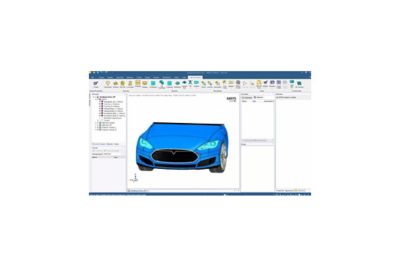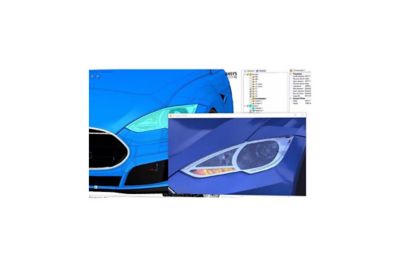-
United States -
United Kingdom -
India -
France -
Deutschland -
Italia -
日本 -
대한민국 -
中国 -
台灣
-
-
产品组合
查看所有产品Ansys致力于通过向学生提供免费的仿真工程软件来助力他们获得成功。
-
Ansys Blog
June 7, 2019
Ansys Speos: Perform Optical Simulations in a New Standalone Platform
For years, the automotive and aerospace industries have been using optical simulations to optimize lighting systems, headlamps, head-up displays (HUD) and products’ look and feel.
However, trends like autonomous vehicles and advanced driver-assistance systems (ADAS) will make optical simulation increasingly important. This is because optical simulations can be used to design automotive sensors.
ANSYS Speos technology can now be
used in a standalone platform within
the ANSYS multiphysics environment
Engineers can couple these sensor simulations with autonomous vehicle control logic and virtual reality to develop self-driving cars.
To streamline the workflow to create these simulations, Ansys released Ansys Speos’ new standalone platform within the Ansys multiphysics environment. The platform will be CAD-agnostic and offer engineers Speos Live Preview. This graphics processing unit (GPU)-based simulation preview feature speeds up the decision-making process.
Ansys Speos’ New Platform Streamlines Optical Simulation Workflows
The new Speos platform offers engineers an intuitive and comprehensive user interface (UI) to perform optical simulations. The platform also adds a series of features that will streamline the product development cycle.
Ansys Speos enables engineers to access direct modeling functionality for quick design modifications.
GPU-based previews enable engineers to speed up the decision process
Speos offers another productivity boost in the form of GPU-based simulation previews and renderings. These previews make optical simulations an interactive part of the design process. They also quickly inform engineers if a design is moving in the right direction, which cuts down iteration and decision-making time.
The new Ansys Speos also connects to Ansys flagship multiphysics solvers through Ansys DesignXplorer and Ansys optiSLang. The integration enables engineers to include optical simulations within multiphysics simulations, design of experiments (DoE) and optimizations.
Finally, Ansys Speos improves collaboration between industry partners by offering encryption functions that embed optical properties and secure intellectual property (IP). This means that engineers can freely share their optical system designs while minimizing the risk of IP theft.
Other new features of Speos technology include:
- A new algorithm that considers the impact of a protective lens on lidar positioning
- A smarter automatic mode to compute and optimize light guide prism angles to obtain an accurate design on the first test












